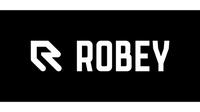Rules of the game
Rules of the game
The rules of padel are very similar to those of tennis, as the ball must be hit over the net and into the opponents' court. However, serving is done underhand, where the ball must first bounce behind the service line before serving. A big difference is that you can let the ball hit the wall after the bounce and only then have to hit it back. Again, this is allowed via the wall and often results in surprising rallies.
A padel court is smaller than a tennis court (20 by 10 meters) and at padel there are no walls (as in squash) but a wall of glass and fencing. Each court, separated by a net, is divided into two service areas and a back court. Padel is always played by four players.
The serve at padel must be underhand, where the ball may be hit a maximum of waist height. The first serve is hit from the right side. Then the serve is hit alternately from the left and right side. One lets the ball bounce once behind the service line (which bounds the 7x5m service box), between the center line and the side wall. The serve must bounce directly into the opponent's diagonal service box without touching the net. The ball may then hit the wall, but not the fence (foul service). The receiver may choose to play the ball back before or after the ball hits the wall. If the ball hits the net edge on a first or second service and then lands in the correct service box, the serve is overplayed.
Scoring
The scoring sequence in padel is the same as in tennis, namely 15, 30, 40 and game, with deuce at 40-40. At deuce, two consecutive points must be scored to win the game. Padel matches are usually "best-of-three," or up to two sets won, with a set won by the team that wins six games first with two games difference. At 6-6, a tiebreak is played, which goes to seven points won by two points difference. Any third set can be played as a supertiebreak or match tiebreak (up to ten points by two points difference).
Serve
The serve must be underhand, where the ball may be hit at the height of your waist (navel) at most. The first serve is hit from the right side. Then the serve is hit alternately from the left and right side. One lets the ball bounce once behind the service line (which bounds the 7x5m service box), between the center line and the side wall. The serve must bounce directly into the opponent's diagonal service box without touching the net. The ball may then hit the wall, but not the fence (foul service). The receiver may choose to play the ball back before or after the ball hits the wall. If the ball hits the net edge on a first or second service and then lands in the correct service box, the serve is overplayed.
Gameplay
During rallies, the ball may touch the ground only once. A player may choose to bounce the ball or volley it. A volley may only not be hit as a return. Once the ball bounces it must do so without first hitting a wall or the fencing, otherwise it is a fault. After the ball has bounced, it may hit the wall or fence one or more times before being returned. The receiver may return the ball directly into the opponent's court, or he may return the ball through the back or side walls. If the ball hits the fence before it gets over the net it is a fault. If the ball is hit through the court over the wall (4 meters) or fence (3 meters) it is normally a point; except if a player outside the cage plays the ball back. The game continues with these rules until the ball bounces twice on the playing surface or a player otherwise violates the rules.




